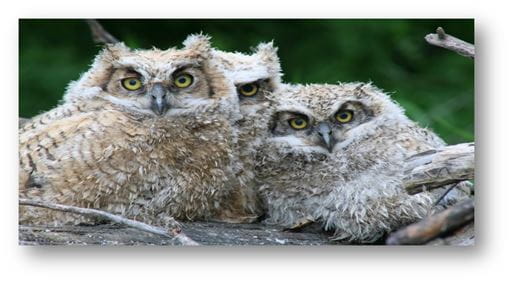Saskatchewan Museum Teams up With University of Regina on Owl Research
CANADA, February 1 – Released on February 1, 2022
The Royal Saskatchewan Museum (RSM) and the University of Regina have begun work on a research project involving great horned owls that includes a unique citizen science component.
If you see a great horned owl, they want to know.
“Great horned owls are one of the most common owls in Saskatchewan,” Royal Saskatchewan Museum Curator of Vertebrate Zoology Dr. Ryan Fisher said. “Populations of great horned owls in southern Saskatchewan have been increasing in recent years and we are interested in how human modifications to the landscape have allowed this bird to be so successful.”

The University of Regina has developed a form that Saskatchewan residents can use to report their great horned owl sightings.
In southern Saskatchewan, great horned owls have shown remarkable adaptability and now occupy and nest in trees that were planted around farmyards, abandoned buildings and other human-made structures.
In addition, these owls also rely on elevated perches such as power poles, fence lines and planted trees to hunt from.
“This adaptability is what makes these birds really unique, as this is one of only a handful of species that seem to do well in human-modified areas,” Dr. Fisher said. “Part of the project revolves around public participation and collaboration in the research, or citizen science – by having people share and contribute to data monitoring and collection.”
Dr. Fisher said they are interested in sightings outside of cities and south of the tree line in the agricultural zone (grassland and aspen parkland).

“This is just some of the innovative research taking place behind the scenes at the RSM,” Parks, Culture and Sport Minister Laura Ross said. “The RSM is truly a centre for excellence when it comes to research, in addition to the incredible exhibits and education programming, there is always something new to discover!”
With great horned owls starting to nest soon (late February and into March), the next couple months will be a key time to get data from people. Owls are extremely sensitive to disturbance, so please take great care when looking for them and try to keep as much distance as possible between you and the owl.
There are some excellent guidelines online to reduce your impact on birds.
The project will run until 2023.
To learn more about the Royal Saskatchewan Museum’s programming and world class research, visit https://royalsaskmuseum.ca/, Facebook (@royalsaskmuseum), Twitter (@royalsaskmuseum), Instagram (@royalsaskmuseum), and YouTube https://www.youtube.com/royalsaskmuseum.
Visit. Donate. Discover.
For more information, contact:
Jamie Gibson Parks, Culture and Sport Regina Phone: 306-527-8152 Email: [email protected]









